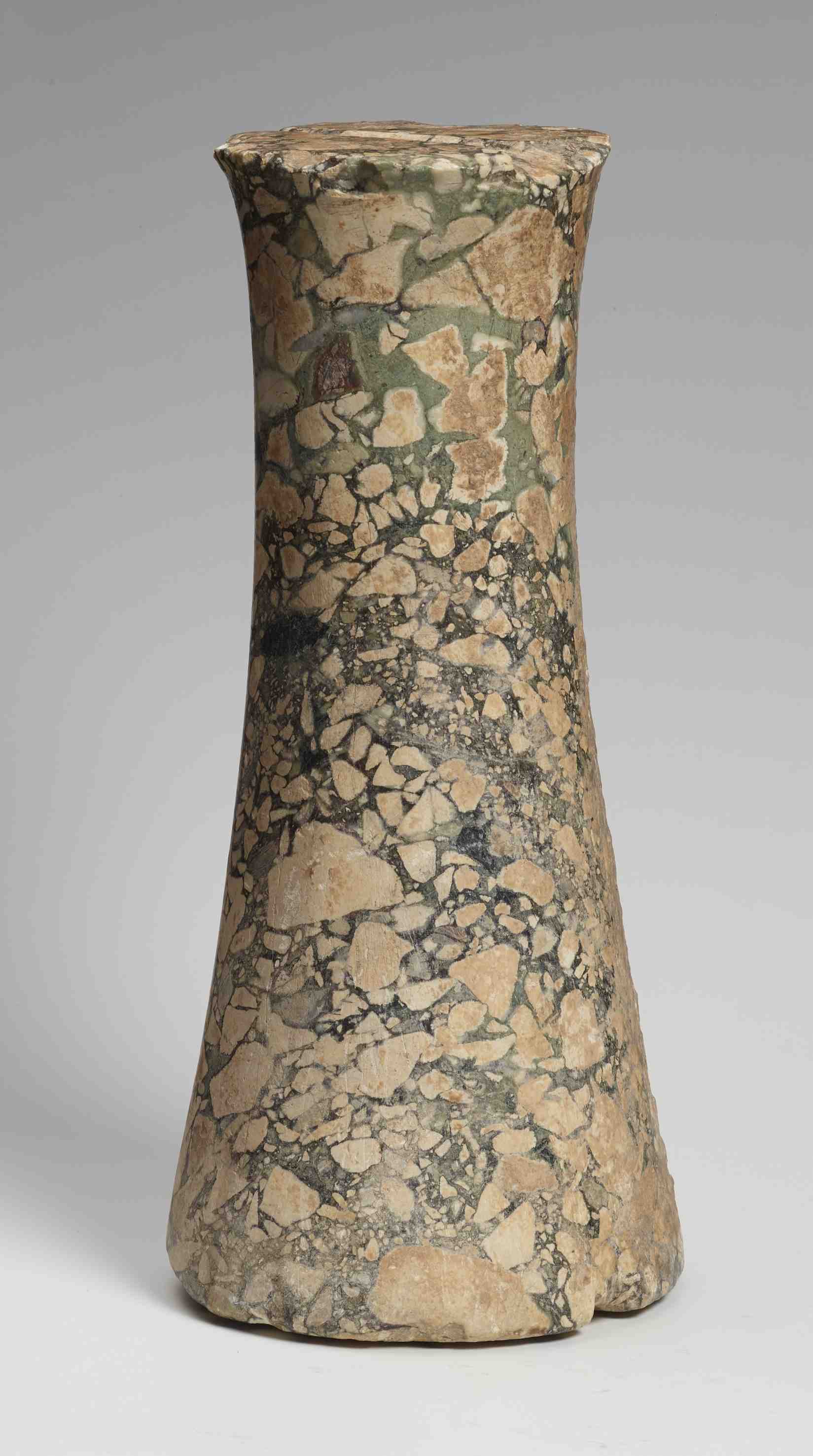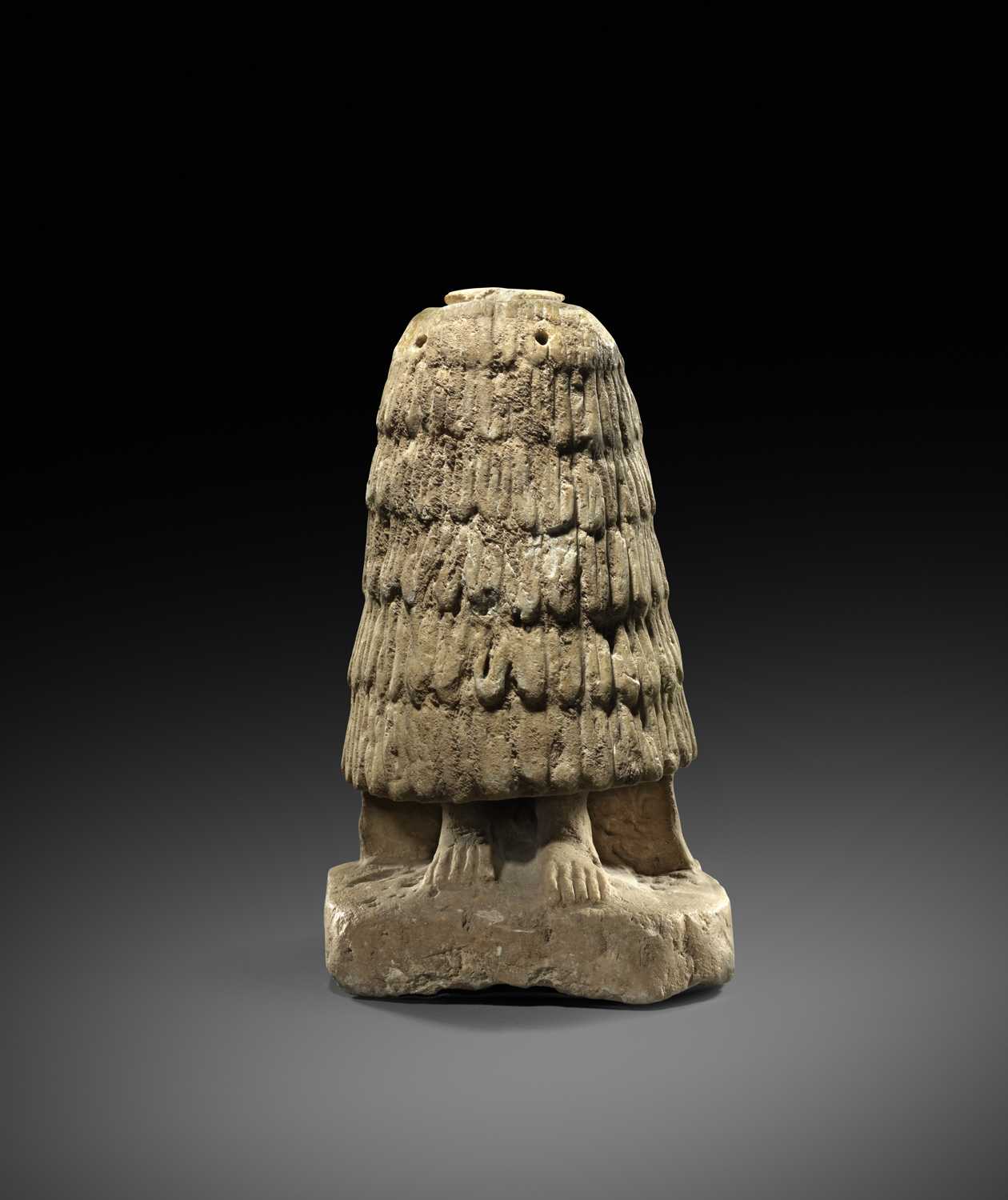The lower half of the male figure preserved, standing on an integral rectangular base with back pillar, wearing an ankle-length six-tiered kaunakes, the petal-shaped tufts delineated by incision, his ankles and long straight toes visible, with seven pierced holes running around the top of the skirt into a circular hollowed section, possibly for the insertion of the upper portion of the figure, another two pierced holes at the back of the skirt in the midsection, and three at the back on the lowest tier of the kaunakes, (together with a small circular 'plug', fitting the circular aperture and seemingly belonging,)
Note
Sculptures such as the above depict worshippers, and were dedicated in temples as devotional votives, offering continuous prayer to the gods in their owner's absence. The characteristic layered skirts worn by these figures are thought to have been modelled after sheepskin skirts worn by devotees during rituals. For a full statuette of the type, measuring just 20cm in height, see the Ashmolean Museum, Oxford, acc. no. AN1919.65. Arguably the most extraordinary sculptures of this type come from Mari, situated in modern-day Syria, and were discovered in the Ninni-zaza Temple: an over lifesized statue of a seated woman, wearing the layered fleecy skirt along with a mantle of the same material, reproduced in C.J. Du Ry, Art of the Ancient Near and Middle East, New York, 1969, p.63, and the standing statue of King Iku-Shamagan. Both are now in the Damascus Museum.






